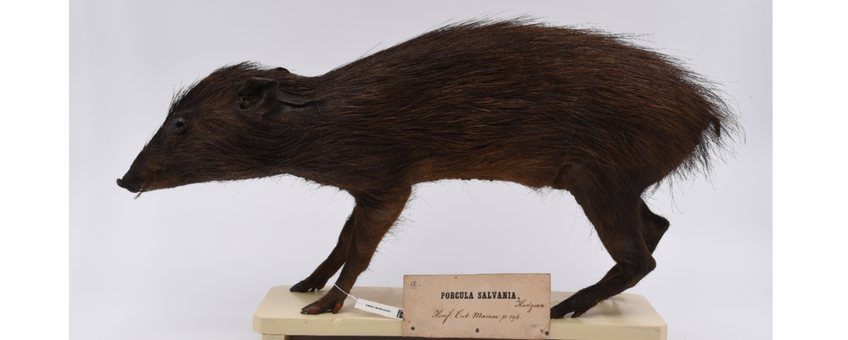
Big love for the world's smallest pig
Animal Breeding and Genomics Group, Naturalis Biodiversity Center, Wageningen UniversityPygmy hogs (Porcula salvania) are critically endangered. They live in India, in an area which is also inhabited by larger herbivores such as rhinos and elephants. Manon de Visser, biologist at the University of Leiden and Naturalis Biodiversity Center, explains: “Pygmy hogs are also called the ‘underhogs’ of their area, because generally they receive less support and attention than for instance the more majestic elephants or rhinos. The little creatures are less than half a meter high, weigh ten times less than the average wild boar, and are hard to observe in the wild, as they hide in between tall grasses within their habitat, which can sometimes grow up to a height of eight meters. Still, like all organisms, they play an important role within their ecosystem.”

To save the pygmy hog from becoming extinct, the Pygmy Hog Conservation Programme (PHCP) in India has been dedicated to breeding, raising, and reintroducing this species for 25 years already. Years ago, the PHCP decided to collaborate with Wageningen University & Research (WUR) and shared the genomic data of six pygmy hogs for scientific purposes. Manon was one of the first researchers to analyze this DNA dataset throughout her master’s programme. This formed a basis for overarching studies by the WUR research group ‘Animal Breeding and Genomics’, that ultimately led to scientific publications in, for instance, Evolutionary Applications and Nature Communications.
Because not many people know about the existence of pygmy hogs, Manon together with WUR colleagues Dr. Mirte Bosse and Dr. Langqing Liu, decided to put the species into the spotlight by writing a ‘quick guide’, which was recently published in the journal Current Biology.
Manon: “I’ve learned a lot about conducting DNA research thanks to my WUR colleagues and of course the pygmy hogs. The knowledge that I gained at WUR I now apply during my PhD research, where I focus on the DNA of amphibians. For me, the pygmy hogs are therefore out of sight, but never out of mind. Actually, they are not completely out of sight either.... Namely, the only prepared pygmy hog specimen of the Netherlands is located in the Naturalis collection, behind the scenes. How amazing is that?”
More information
- The article in Current Biology: Quick Guide - Pygmy hogs. This link gives free access to the guide until 14 June 2021.
- More information on the Pygmy Hog Conservation Project on Pygmyhog.org.
- The referenced article in Evolutionary Applications can be found here.
Text: Manon de Visser, Naturalis Biodiversity Center
Leadphoto: Pepijn Kamminga (the taxidermied pygmy hog at Naturalis)
Drawing: Bas Blankevoort
